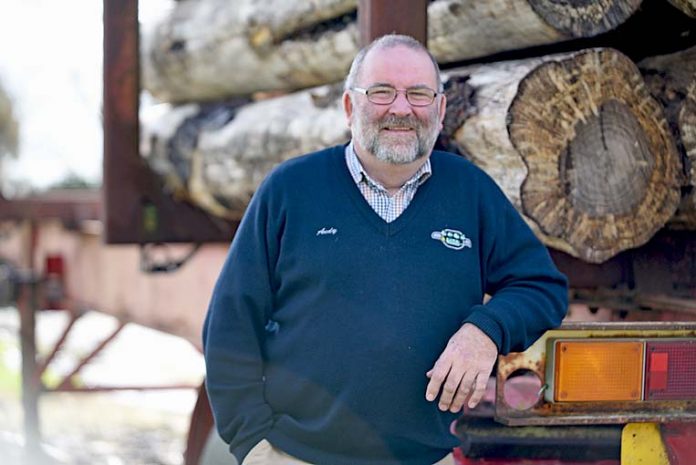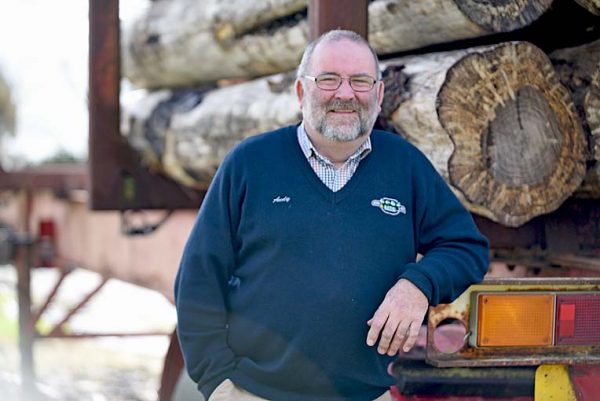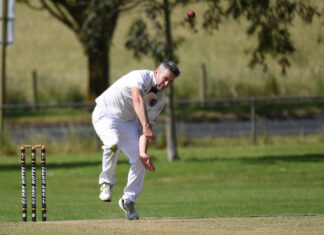

A TRAGIC accident that claimed the lives of four young forestry workers has been a “catalyst” to the industry developing unprecedented fatigue risk management guidelines to improve safety and save lives.
This was the message of Logging Investigation and Training Association general manager Andy Cusack, whose organisation has been at the forefront of tackling the issue.
In a ground-breaking initiative, the industry has come together to minimise fatigue-related accidents across the regional forestry sector.
The new draft guidelines – which are yet to be finalised – also stem from “several” other fatigue-related road deaths in the forestry sector over the past 10 years.
“The industry has taken the attitude that something needed to be done – the Penola accident was a massive catalyst to this,” Mr Cusack said.
He said the accident not only rocked the community, but also the regional forestry sector.
“We saw houses across Mount Gambier with hard hats displayed, as well as fences across the region – the level of emotion was unprecedented,” Mr Cusack said.
“It was certainly a wake-up call and industry wanted to undertake some initiatives to improve the situation.”
With advances in technology and safety in harvesting equipment and procedures within plantations, he said the biggest risk factor in the sector was now road-related.
He said some companies were now factoring in “home-to-home” transport time in developing workers’ hours.
“Individual employers have expended an incredible amount of energy and resources into trying to manage risks,” the training operator said.
He said the employer of the four forestry workers who died in the accident had also been put through a “rigorous” process with SafeWork SA.
“SafeWork SA has also been looking at other logging enterprises in this region – they have undertaken some audits,” he said.
Up to six logging companies were audited during the process.
“There has been a whole raft of things implemented around people’s work hours and driving,” Mr Cusack told The Border Watch.
“There is certainly a very significant thought process being put into travel times and we are now aware of how to manage that risk.”
He said the risk was not just about working long hours, but also lifestyle, health and well-being factors.
“We are trying to boost that side of it, which is a major factor in risk management,” Mr Cusack said.
He said the association had been the facilitator of developing a set of guidelines, which resulted in all sectors of the industry coming forward.
He foreshadowed these guidelines would provide a framework around hours and risk identification.
Some of these guidelines were likely to be modelled around the nation’s road transport heavy vehicle guidelines.
“With fatigue, the higher risks are primarily road based – transport to and from work,” Mr Cusack explained.
He said the organisation had partnered with scientific professionals – including internationally renowned fatigue management expert Professor Drew Dawson – to help put together the draft guidelines.
“We are also working with SafeWork SA, which is keen to make sure this progresses – they would probably like it to progress a little bit faster. The pure scale of this work has taken some time.”
Mr Cusack said more than 20 “significant” contractors had come together on the issue, as well as transport companies, Port of Portland, silvicultural companies and forestry growers.
“It is the first time I have seen the industry together in the room in probably 35 to 40 years,” he said.
While there was no “easy fix”, he said there had been some positive developments, including a “collective recognition” for change.
“Some of the forestry owners have put in their own requirements … and a lot of contractors have also realised they need to do something. Some of the smaller contractors have been the most proactive,” Mr Cusack said.
“There is a now a chain of responsibility that is coming through in the industry.”
The industry has already responded to reduce hours of workers since the accident, which has been resisted by some workers who did not want to see their hours reduced.
“There has been some resistance to cutting back hours because there are financial implications to employees,” Mr Cusack said.
Mr Cusack warned fatigue-related issues were also being driven by employees’ lifestyles outside of work hours.
“This is a challenge also facing the industry,” he said.
Logging Investigation and Training Association is a not-for-profit organisation operated by an industry board consisting of representation from within the forest industry and transport sectors.
It is the longest serving forest training unit in Australia and is based behind the TAFE SA Mount Gambier campus.
Tabeel Trading declined to comment on the issue, citing the ongoing investigation by SafeWork SA.





